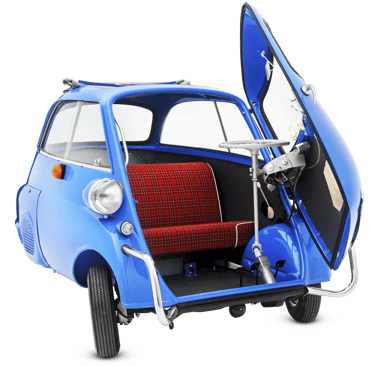Bubble Cars and Beyond: A Journey Through the Microcar Universe
This article takes a comprehensive look at the world of microcars, also known as "bubble cars," from their origins in the early 20th century to the present day. It explores the rise of microcars in Europe during the post-World War II era, their characteristics, and the popularity of bubble cars in the 1950s and 1960s. The article also highlights the modern evolution of microcars, including electric-powered models, quadricycle legislation, and the use of microcars in local deliveries. It concludes by emphasizing the enduring legacy of microcars and their impact on the automotive industry.
MICRO CARS
11/17/20232 min read


Bubble Cars and Beyond: A Journey Through the Microcar Universe
Introduction:
Venture into the world of microcars, where small size meets big character. Often affectionately known as "bubble cars," these pint-sized vehicles have left an indelible mark on automotive history. In this comprehensive exploration, we'll take a closer look at the charming universe of microcars, from their humble beginnings to the present day.
Origins and Predecessors:
Before the term "microcar" gained popularity, small cars went by various names like "voiturette" and "cyclecar." The early 20th century saw the emergence of these compact wonders, with voiturettes taking the spotlight from 1895 to 1910 and cyclecars dominating the scene from 1910 to the late 1920s.
Europe 1940-1970: The Rise of Microcars:
The post-World War II era witnessed the birth of what we now know as microcars. With their origins in the United Kingdom and Germany, these minuscule marvels became popular, especially in the 1950s. The microcar boom was a response to the need for affordable personal motorized transport, fueled further by their exceptional fuel efficiency during the 1956 Suez Crisis.
Characteristics of Microcars:
Microcars, equipped with three or four wheels, often boasted engines smaller than 700 cc (43 cu in). The majority were three-wheelers, qualifying them for lower taxes and motorcycle licensing in many countries. An engine displacement of less than 700 cc was a common characteristic, with some exceptions reaching up to 1,000 cc. Many microcars adopted engines originally designed for motorcycles.
Bubble Cars:
A subset of microcars, affectionately dubbed "bubble cars," gained popularity in the 1950s and 1960s. Recognizable by their aircraft-style bubble canopies, exemplified by vehicles like the Messerschmitt KR175, Messerschmitt KR200, and FMR Tg500, these cars added a whimsical touch to the microcar landscape. Other bubble-like appearances, such as that of the Isetta, further contributed to their nickname.
Microcars in Worldwide Modernity:
Fast forward to the present, and microcars continue to weave through our streets. Recent additions include the 2001 Aixam 5xx series, Renault Twizy, Citroen Ami, and XEV Yoyo. Electric-powered microcars, such as the CityEl, ERAD Spacia, Corbin Sparrow, REVAi, Commuter Cars Tango, Tazzari Zero, and the resurrected Peel P50, showcase the evolution of microcar technology.
Quadricycle Legislation:
The European Union introduced the quadricycle category in 1992, leading to separate classification and regulations for microcars in several European countries. Enjoying relaxed requirements for registration and licensing, microcars often benefit from lower taxes and insurance costs compared to regular cars.
Microcar Trucks:
Beyond personal transportation, microcars have also found utility in local deliveries. Microcar trucks, exemplified by the Piaggio Ape and the four-wheeled Honda Acty, navigate narrow streets with ease, providing a nimble solution for urban logistics.
Conclusion: A Compact Legacy That Rolls On:
As we bid farewell to this journey through the microcar universe, one thing is clear – these diminutive vehicles, whether affectionately called bubble cars or known by other names, have etched themselves into the automotive tapestry. From the charming past of post-war Europe to the electrically charged present, microcars continue to captivate with their small size, unique designs, and a spirit that proves greatness truly can come in small packages. Whether zipping through the 1950s or silently humming in the 21st century, microcars stand as a testament to innovation and adaptability in the ever-evolving world of transportation.
